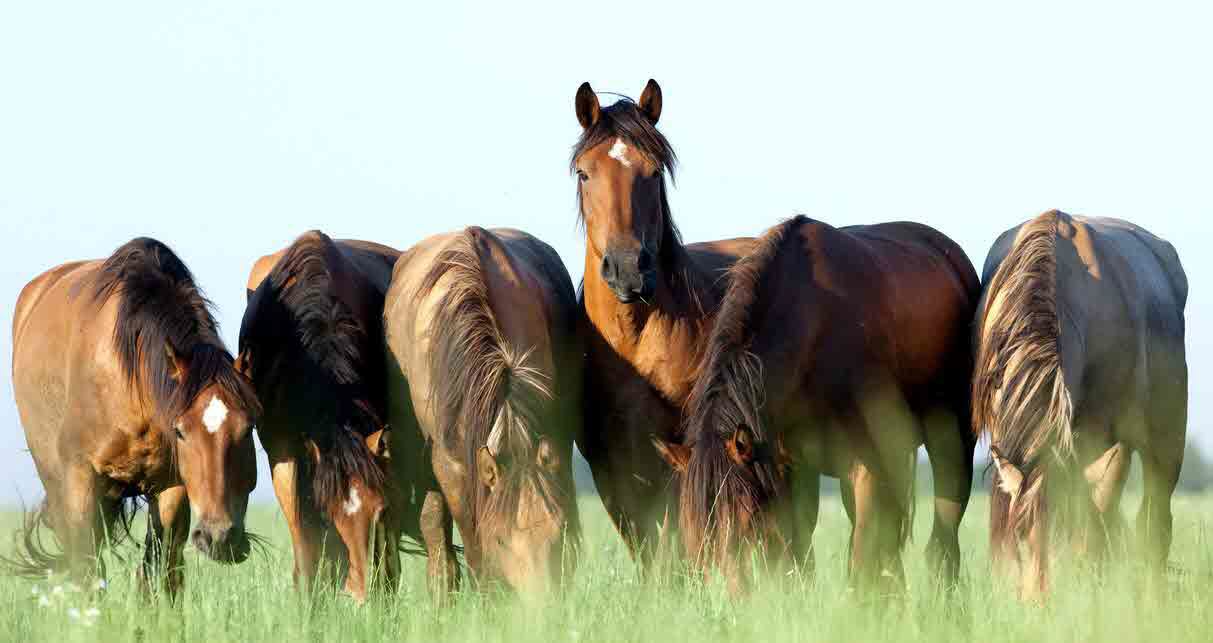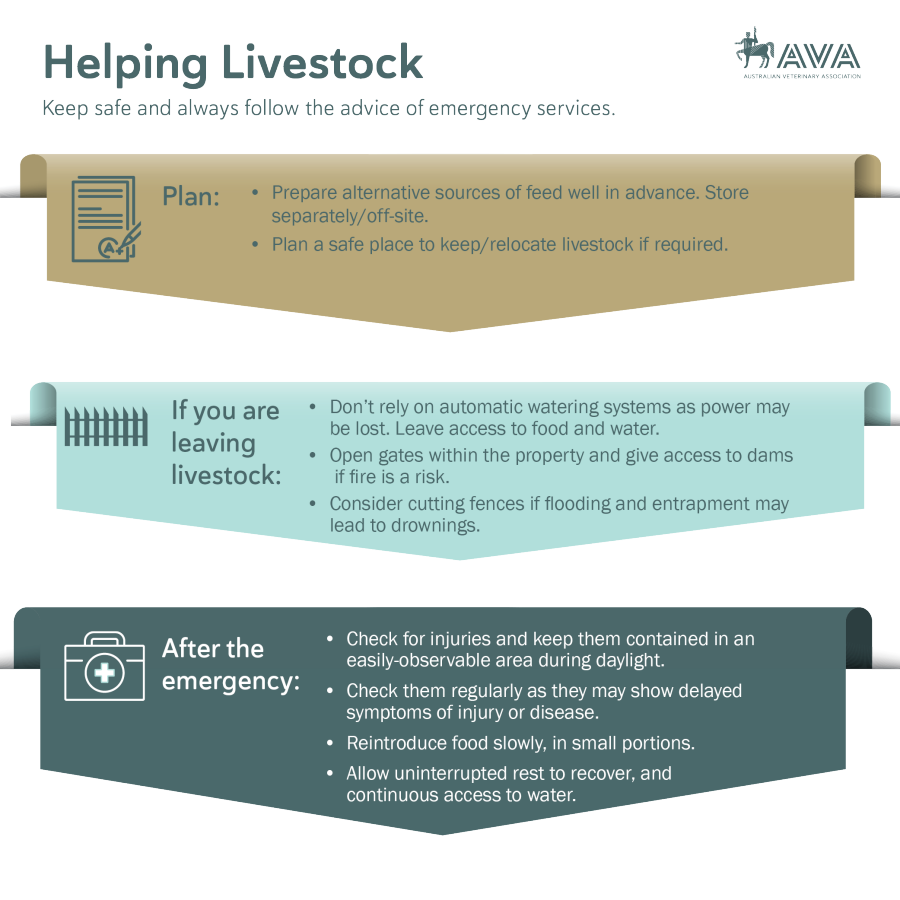Resources for livestock and horse owners

It’s not only pets that become vulnerable victims of natural disasters, but livestock and horses can also be at risk during emergencies.
- What can I do to help protect my horses and livestock during a natural disaster?
- Implement your disaster plan
- After the emergency
- For horses
- For livestock
- Downloadable practice flyers
What can I do to help protect my horses and livestock during a natural disaster?
It's important to be prepared for all types of natural disasters to ensure that our horses, livestock and we remain safe.
Make sure your emergency kit is prepared at the start of the fire, cyclone and flood season (further information is available from your local veterinarian).
Decide on a safe place to keep your horse and livestock prior to an emergency. In making this decision, the vital points to consider are whether the place is prone to flooding, close to cyclonic winds, is at risk of flying debris, and whether it can be accessed after an extreme event.
If it's likely that you will need to evacuate your horse or livestock, you should determine when it will be the most appropriate and safest time to do so.
Practice your disaster plan at least once before each disaster season.
Implement your disaster plan
If evacuation is impossible, move your horses and livestock to the safest place possible on the premises.
Whether you leave horse in the paddock or in their stables should depend on the type of emergency and the risk of injury from material or trees in the paddocks, the likelihood of flooding and the stability of their stables.
Whether you leave livestock in yards or in the paddock should depend on the type of emergency and the risk of injury from material or trees in the paddocks, the likelihood of flooding and the stability of their yards.
If time permits, secure or remove all loose objects.
Make sure the horses and livestock have access to a safe food and water source. Do not rely on automatic water systems as power may be lost.
After the emergency
Survey the area for hazards such as sharp objects, dangerous materials, live wires and contaminated water.
Check your horses and livestock for any injuries and release them into safe and enclosed areas, only during daylight. Watch them closely for the next few hours. Often familiar areas and scents have changed which can confuse your horses and livestock and alter their behaviour.
If your horses and livestock have been without food for a long period, reintroduce food slowly and in small portions. Allow free access to clean water. Do not give cold water.
Allow uninterrupted rest to recover from trauma and stress.
For horses
Clearly identify your horse before a potential disaster hit.
Often brands will not be the easiest way to link the horse back to you.
It's important to use other identification:
- Neck band with name and phone number
- Microchip
- Halter tag
- Luggage tag braided into the mane or tail
- Clipper-shaved information in the animal’s hair
- Livestock marker or spray paint
- Permanent marker on hoof wall.
For livestock
Ensure that your animals have adequate identification to link them back to you.
This may include:
- Ear tags, tail tags or leg bands
- Neck chains with ID
- Ear notches
- Microchips
- Brands
- Livestock marker or spray paint.
Some areas in Australia are prone to being cut off by water for long periods of time, resulting in lack of feed access for stock. Other situations may occur when all feed is destroyed by water or fire damage.
It's important to make sure you have alternative sources of feed in case of a disaster. This may mean having a storage shed on or off-site specifically for storing feed, or a pre-arrangement with a stock feed supplier for these situations
Make sure you have a designated disposal area for potential stock losses. Dead livestock can rapidly decompose and contaminate water supplies within days. One dead cow can produce 170L of leachate within two months.

